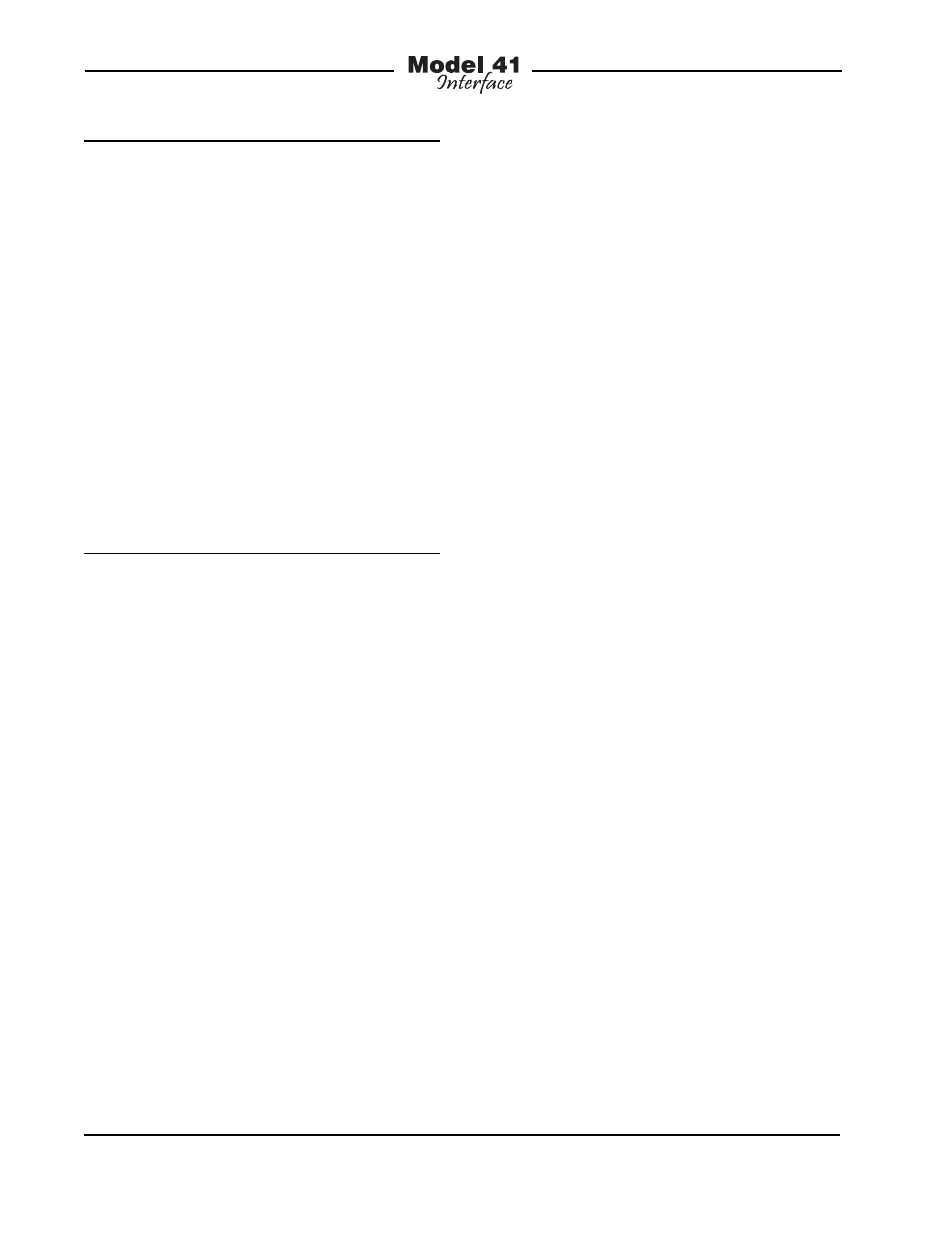Ifb circuits – Studio Technologies 41 2004 User Manual
Page 9

Issue 1, October 2004
Model 41 User Guide
Page 10
Studio Technologies, Inc.
If connecting an unbalanced source in
this manner results in hum or noise, try
connecting signal high to the + pins, and
shield to the – pins; leave the shield pins
unterminated.
As previously mentioned, the Model 41 is
compatible with matrix intercom systems
from Riedel Communications. Appendix
A, located near the end of this user guide,
provides detailed connection information.
IFB Circuits
As mentioned previously, the Model 41
has four independent IFB output circuits
each supplying DC power and two chan-
nels of unbalanced audio. The IFB circuits
are designed to connect to a variety of
devices that conform to the broadcast
IFB standard. In this implementation pin
1 is used for a combination of shield, DC
power return, and audio common; pin 2
supplies a combination of DC power and
one channel of unbalanced audio; pin 3
supplies a second channel of unbalanced
audio. The DC power supplied on pin 2 is
30 volts nominal with a maximum current
of nominally 200 milliamperes. The audio
superimposed on the DC power has a
nominal signal level of –10 dBu. Its audio
source is the channel one audio input
associated with that specific IFB circuit.
The audio on pin 3 also has a nominal
signal left of –10 dBu. Its audio source
is the channel two audio input channel
associated with that specific IFB circuit.
The Model 41’s IFB circuits are interfaced
using four 3-pin male XLR-type connec-
tors which are located on the unit’s back
panel. The associated interface cables,
one for each IFB circuit, must be terminat-
ed with 3-pin female XLR-type connectors.
In most cases the IFB circuits should be
wired by way of an input/output connector
panel rather than directly to the external
devices. It’s also recommended that the
panel have “mults” (multiple connectors)
for each of the IFB circuits. For trouble-
shooting purposes it also may be useful
to have the IFB circuits pass through
points on an audio patch bay.
The type of interconnecting cable used
between the Model 41’s IFB circuits and
the user devices will vary by application.
In a fixed installation it would be typical
to use 22 AWG, shielded, stranded cable
in either a single- or 2-pair configuration.
With single-pair cable, pin 1 should be
connected to shield. Pins 2 and 3 would
connect to the cable pair.
If 2-pair cable is used, pin 1 should con-
nect to one side of each pair, with pin 2
going to one side of pair one and pin 3
going to one side of pair two. The shields
Signal
Signal
Connections High
(+)
Low
(–)
Shield
IFB Circuit 1-Channel 1
24
12
25
IFB Circuit 1-Channel 2
10
23
11
IFB Circuit 2-Channel 1
21
9
22
IFB Circuit 2-Channel 2
7
20
8
IFB Circuit 3-Channel 1
18
6
19
IFB Circuit 3-Channel 2
4
17
5
IFB Circuit 4-Channel 1
15
3
16
IFB Circuit 4-Channel 2
1
14
2
Notes: 1) Connector type on Model 41 is 25-pin
D-subminiature female. Installer must provide plug
(male). Connector uses 4-40 threaded inserts for
locking with mating plug.
2) Wiring scheme follows TASCAM DA-88 convention.
Standard DA-88-style wiring harnesses are directly
compatible, with the exception of 4-40 screw threads
being
required.
Figure 3. Connections for Audio Inputs using
Dual-Channel Nomenclature
